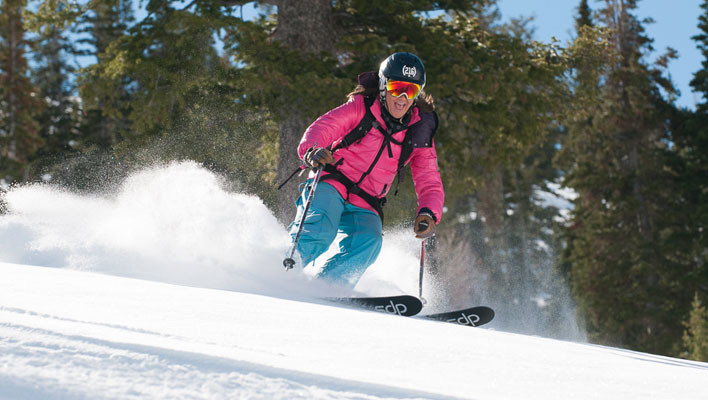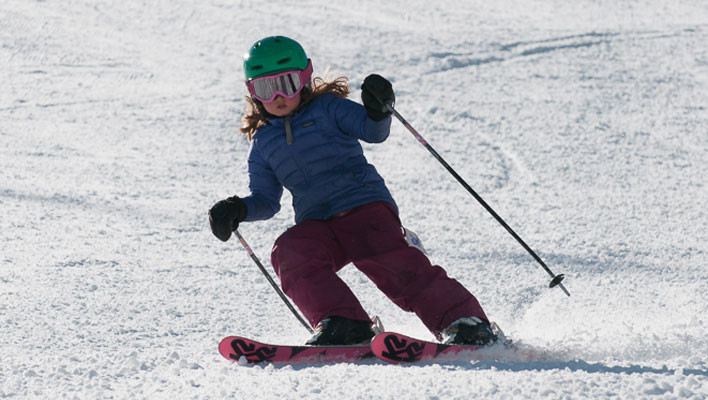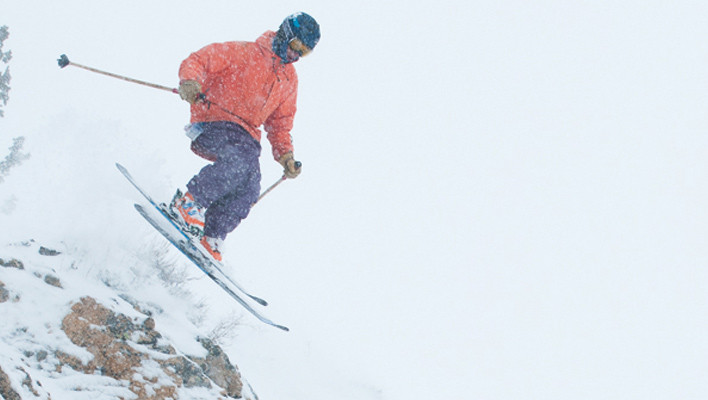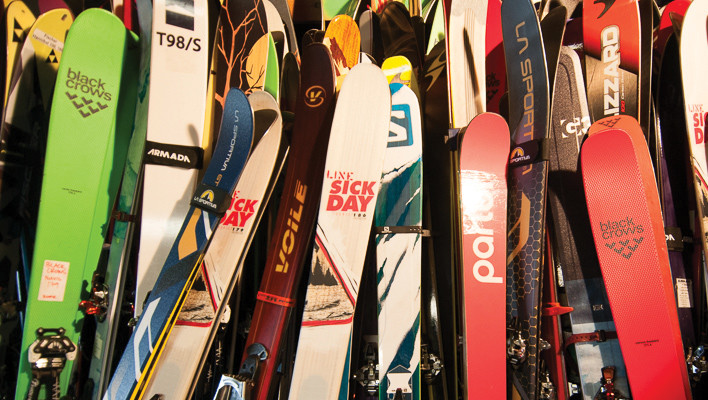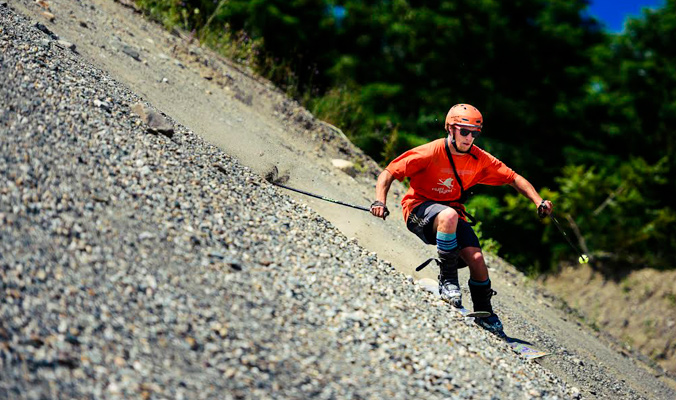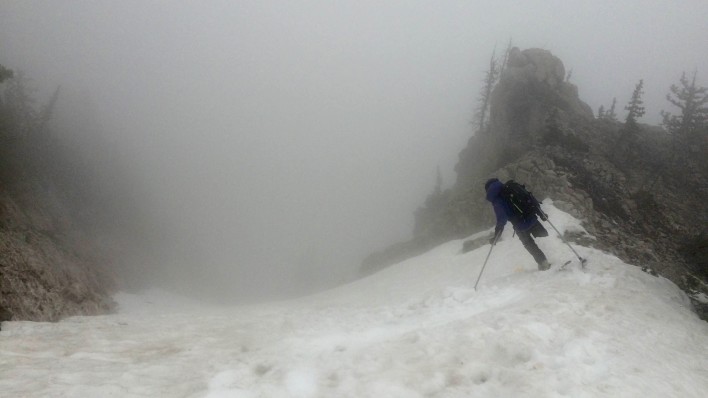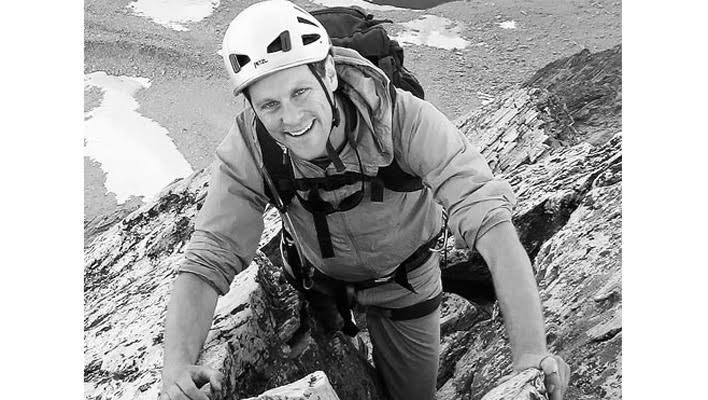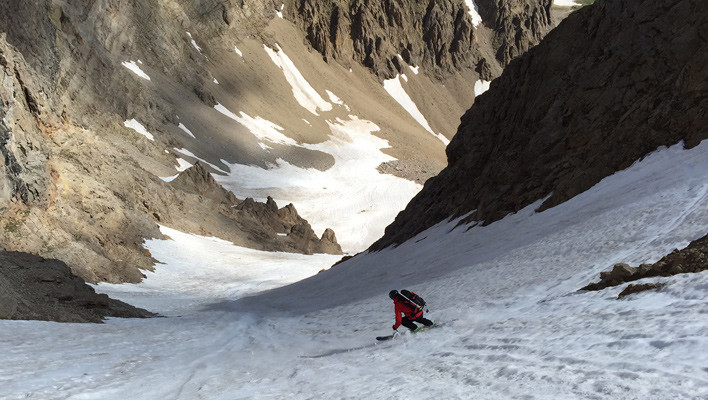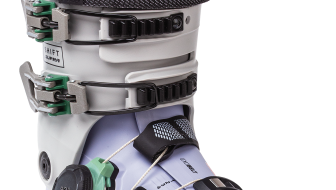There are three basic ski constructions: sidewall, cap or hybrid. On a ski built using standard sidewall construction—also called sandwich construction—the space between the ski’s metal edge and topsheet is sealed with a near-vertical “wall” of ABS plastic, which equates to torsional stiffness, durability and improved edge grip. The downsides? Weight and cost.
Tech Tip: kid ready bindings and skis
There are endless rockered and lightweight ski options for adults, but what’s on the market for youth rippers? Not much, but a few brands offer small big-mountain skis, and there’s a new youth AT binding available.
Tech Tip: Five-Point Sidecut, Defined
A ski of traditional profile is widest at the tip, narrow underfoot and wide again at the tail. Five-point sidecut re-envisions that shape, moving the ski’s widest points closer to the binding so the shape tapers—or becomes narrower—at the tip and tail.
Tech Tip: Shell Shock
Polyurethane (PU) is a stiff thermoplastic used to make most alpine boots and some AT boots. “The downside to PU is that it’s affected by temperature, and therefore manufacturers use more layers of PU, making the boots heavier,” says Giordano Vichiet, Dynafit’s footwear manager.
Tech Tips: Core Concepts
“What a ski core is made of determines how damp it is, how lively it is and how long it lasts,” says former Backcountry ski tester Oliver Blackman, who makes custom skis near Smugglers’ Notch, Vt. Traditionally, Blackman says, that core material is wood, and while some manufacturers use foam in their cores, wood offers better longevity and character, depending on the type.


